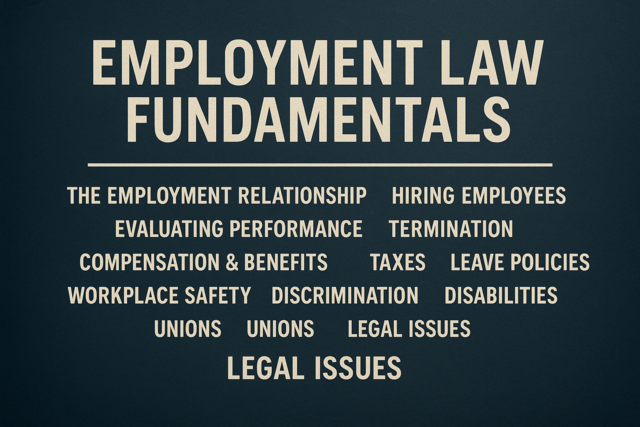Welcome to this article prevention and intervention strategies meant to minimize workplace violence. These programs cannot eliminate workplace violence as nothing can do that but these programs can help.
We cover early warning signs and appropriate responses. We also looked at escalated threats and appropriate responses. Looking at programs and related issues can help minimize workplace violence so let's get started.
A big picture of why
Many theories today exist on what causes workplace violence. We should be careful when looking at the theories to avoid stereotyping as stereotyping will not help us do a proper analysis to help us minimize workplace violence. It is also not useful to stereotype an organization since a stereotype will not help us objectively identify factors that can minimize workplace violence.
An incidence of violence in the workplace can result from a number of factors. But the frustrating part is that we do not know for sure what the factors are. We can try to eliminate workplace violence but only achieve minimizing it. We should be clear, however, that:
-
Violence is unacceptable workplace behavior
-
The threat of violence is unacceptable workplace behavior
What we do know also is that millions of people in the United States each year are victims of non fatal workplace violence. Workplace violence is also a leading cause of fatal injuries each year in the United States.
What is the violence against employees like? Situations and circumstances vary but here is a list of what can be included.
-
Robberies
-
Acts done by disgruntled workers or co-workers
-
Acts done by dissatisfied customers
-
Domestic incidents that impact the workplace
What strategies should include
A background check can help uncover issues to prevent workplace violence. This check can show a criminal background and what charges included. The check can be of someone who is new to an organization or existing or under consideration for hire. If an applicant was charged with a violent crime you should consider this when deciding to hire them.
The policy of every organization should be to promote a safe work environment. This includes safety for workers and visitors. The work environment should not include:
-
Violence
-
Threats of violence
-
Harassment
-
Intimidation
-
Other disruptive behavior
Every organization should make clear what is not acceptable behavior. Also clear should be that all unacceptable behavior will not be tolerated. The organization will deal with the unacceptable behavior appropriately.
Organizations should have in place documentation that covers:
-
How to manage violent situations
-
How to manage a threat of violence in the workplace
-
Making all employees aware of the potential of workplace violence
-
Make all employees aware of early warning signs of possible violence
-
Make all employees aware of how to respond to incidents
-
Make all employees aware of how to respond to potential incidents
The documentation and related training should also explain who in an organization or community can assist with a violent situation. This documentation should help all individuals including managers and supervisors. Prevention tips should also be covered in the documentation. Contractors and visitors should also read the documentation and help with prevention of workplace violence and deal with incidents appropriately.
Any programs at an organization should support a workplace environment where all employees effectively work against violent or potentially violent incidents. Each employee should focus on prevention. Each employee should understand:
-
A definition of workplace violence
-
How to respond to workplace violence or its threat
-
How to prevent workplace violence or its threat
-
Success depends on the attention of each employee
-
Each employee should treat co-workers, customers, and visitors with respect
Some best practices
Organizations can have in place experts who help with these issues.
How employees, managers, and supervisors should interact with each other � this includes being familiar with related policies, how to report acts or potential acts of violence, and how to inform about court orders concerning domestic situations so the organization can help
How managers and supervisors should be responsible for issues such as providing information about workplace violence policies, take all reports seriously, investigate all acts, encourage employees to explain how the organization can help with domestic violence issues, provide feedback to employees on their reports.
How security staff is responsible for diffusing violent situation, provide technical advice, assist in conducting investigation, work with law enforcement, and support the making of arrests when appropriate.
How the human resources department assists in investigating possible threats of workplace violence, provide expertise in helping supervisors determine an appropriate course of action, advise on rules and regulations, and offer training courses on how to deal with workplace violence
Strategies to prevent workplace violence
A strategy regarding prevention is a major component of an effective program against workplace violence. Let's look now on what an organization can do to address prevention and awareness to deal with the potential for violence, intimidation, or threats. Here are some steps concerning the strategy.
1. All employee must become familiar with the organizational documentation concerning the strategy on preventing workplace violence
2. All supervisors and managers must discuss with their staff the policy for preventing workplace violence so that staff understands how to handle incidents of violence and consequences such as criminal charge and all disciplinary action
An effective prevention strategy includes a healthy, caring, and professional environment and minimizing for all employees:
-
Hostility
-
Negative feelings of isolation
-
Resentment
Here are techniques that can help.
-
Offer opportunity for development in the workplace
-
Promote open communication including union representatives if appropriate
-
Create a family friendly workplace
-
Listen to the complaints of employees
-
Provide feedback to those who file complaints
-
Promote quality of life issues such as job satisfaction
-
Be consistent in disciplining employees who show improper conduct
Strategies for addressing issues of safety
Keeping workers safe and secure in the workplace is the right strategy for preventing violence in the workplace. Here are some ways to keep workers safe.
-
Use security personnel
-
Use photo identification badges
-
Use coded card keys
-
Use on site guards
-
Use guards to direct visitors
-
Use metal detectors
In an emergency use law enforcement assistance. If a worker sees suspicious behavior or an unauthorized person at a workplace site, a worker should contact police or a security staff member.
Training and education strategies
Important to a prevention strategy are training, education, and communication. Here are examples of effective ways to conduct education and communication meant to prevent workplace violence.
1. Communicate clearly about any programs in place to prevent workplace violence
2. Communicate about the definition of workplace violence and what to do when you encounter a problem
3. Educate about management and employee responsibilities
4. Educate about early intervention techniques
5. Educate about who to call for assistance
6. Educate about conflict resolution
Strategies for finding warning signs
Employees should be aware of actions and conduct that could be a warning sign of potential workplace violence. This is a good prevention strategy. Here is behavior that could be a warning sign.
-
High absenteeism
-
Excessive sick leave
-
Excessive tardiness
-
Leaving work early
-
Taking up supervisor's time about personal problems
-
Productivity problems
-
Making mistakes
-
Poor judgement
-
Missed deadlines
-
Mood swings
-
Concentration problems
-
Too much risk taking
-
Poor health and hygiene
-
Inability to take responsibility
-
Depression
-
Signs of drug or alcohol use
-
Threats and throwing objects
Early intervention and actions
Intervening early is an important strategy to diffusing possible workplace violence. Letting a supervisor know of suspicious behavior is important. Here is what a supervisor can do.
-
Take appropriate action
-
Let all workers know violence is not tolerated
-
Let all workers know appropriate action will happen in the event of workplace violence
Here are forms of violence in the workplace.
-
Using a weapon
-
Concealing a weapon
-
Assault
-
Damaging property
-
Intimidation
-
Frightening people
-
Harassing
-
Stalking
-
Verbal abuse
-
Punching a wall
-
Shaking a fist
-
Kicking
-
Pounding on a desk
-
Screaming
-
Jumping up and down
-
Threats in person or through email, phone calls, or letters
-
Acts of domestic violence
-
Bomb threats
Early warning signs include that a person is verbally abusive, uncooperative, intimidating, bullying, and/or disrespectful. An appropriate response to these early warning signs include:
1. Observe and report to a supervisor
2. A supervisor should contact the next level of management
3. Document the behavior
4. Supervisor should meet with the employee
Here are guidelines on how a supervisor should handle the meeting with the employee.
1. Schedule the meeting at a private time and place
2. Be direct about concerns
3. Ask for input
4. Ask what should be done
5. Ask how you can help
6. Identify what behavior is not appropriate
7. Indicate what corrective action the employee must take
8. Indicate the time period for corrective action
9. Provide documentation that is relevant
Now that we looked at early warning signs, here are examples of an escalation.
1. Arguing � including with employees, managers, vendors, and customer
2. Refusing to obey policies and procedures
3. Stealing
4. Damaging equipment
5. Expresses a wish to hurt another person
6. Sends threats
7. Sees self as a victim
An appropriate response to this escalation includes:
1. Call 911
2. Call law enforcement
3. Contact the supervisor
4. Document the behavior
5. Supervisor should meet with the employee
Here are guidelines on what the supervisor should do.
1. Meet with the employee
2. Start or continue discipline
3. Call for assistance as needed
4. Remain calm
5. Speak slowly, softly, and clearly
6. Ask the employee to sit down
7. Ask for input from the employee
8. Explain the employee has other options besides violence
Questions that the supervisor can ask of the employee include:
1. How can I help?
2. How can you regain control of yourself?
3. What will you achieve with violence?
4. Why do you feel violence will help?
More escalation includes:
-
Use of a weapon
-
Threats of suicide
-
Physical fighting
-
Destroying property
-
Displaying rage
Responses that are appropriate include:
1. Call 911
2. Remain calm
3. Contact a supervisor
4. Leave the area
5. Cooperate with law enforcement
Once law enforcement is on the scene
When law enforcement arrives on the scene an employee should assist as possible. Here is how they can assist.
-
Provide details of observations
-
Explain the location of an incident
-
Document observations
-
Provide a description of threats
Dealing with issues of domestic violence
Early warning signs that a victim can show include emotional outbursts, fear, and signs of physical abuse. Work performance can deteriorate. Intervening early can help. Appropriate responses can include the same actions as for an escalated incident. Here is more of what a supervisor can do.
1. Talk with the employee
2. Express concern of violence
3. Explain about community resources including the National Domestic Violence Hotline
4. Discuss a safety plan if an incident occurs at the workplace
Dealing with a bomb threat or suspicious package
Here are guidelines on what to do if you are in contact with a suspicious package or letter or see a bomb threat.
1. Do not handle the letter or package or open it
2. Evacuate the area
3. Notify a supervisor
4. Report the item to a guard and law enforcement
With a bomb threat here are guidelines on what to do.
1. For a telephone threat indicate where you received the call
2. Indicate what time you received the call
3. Identify whatever you know about the caller � sex, name, telephone number, location of call
4. Explain about the caller's voice � calm, excited, and what kind of accent
5. Explain about the age of the caller
6. Indicate observed background noise
Questions to ask about a bomb threat include:
1. When will it explode?
2. Where is it?
3. What appearance does it have?
4. Why are you using a bomb?
Notify police and a supervisor of the answers to the questions. Evacuate the area. Call 911.
In the event of a medical emergency
Here is what you can do in the event of a medical emergency.
1. Call a rescue squad and the fire department
2. Stay with an injured person
3. Apply first aid if you are trained
A quick review
We have now looked at prevention and intervention strategies meant to minimize workplace violence. These programs cannot eliminate workplace violence as nothing can do that but these programs can help. We covered early warning signs and appropriate responses. We also looked at escalated threats and appropriate responses. Looking at programs and related issues can help minimize workplace violence.






























